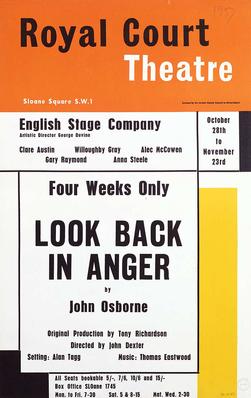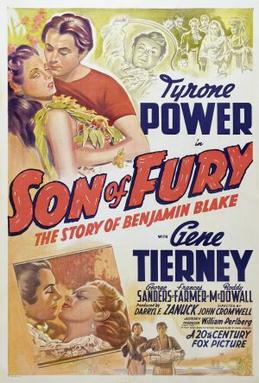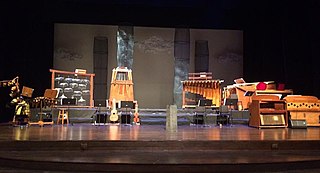Related Research Articles

The performing arts are arts such as music, dance, and drama which are performed for an audience. They are different from the visual arts, which are the use of paint, canvas or various materials to create physical or static art objects. Performing arts include a range of disciplines which are performed in front of a live audience, including theatre, music, and dance.

Harry Partch was an American composer, music theorist, and creator of unique musical instruments. He composed using scales of unequal intervals in just intonation, and was one of the first 20th-century composers in the West to work systematically with microtonal scales, alongside Lou Harrison. He built custom-made instruments in these tunings on which to play his compositions, and described the method behind his theory and practice in his book Genesis of a Music (1947).

The Oresteia is a trilogy of Greek tragedies written by Aeschylus in the 5th century BCE, concerning the murder of Agamemnon by Clytemnestra, the murder of Clytemnestra by Orestes, the trial of Orestes, the end of the curse on the House of Atreus and the pacification of the Erinyes. The trilogy—consisting of Agamemnon (Ἀγαμέμνων), The Libation Bearers (Χοηφόροι), and The Eumenides (Εὐμενίδες)—also shows how the Greek gods interacted with the characters and influenced their decisions pertaining to events and disputes. The only extant example of an ancient Greek theatre trilogy, the Oresteia won first prize at the Dionysia festival in 458 BCE. The principal themes of the trilogy include the contrast between revenge and justice, as well as the transition from personal vendetta to organized litigation. Oresteia originally included a satyr play, Proteus (Πρωτεύς), following the tragic trilogy, but all except a single line of Proteus has been lost.
Benjamin Burwell Johnston Jr. was an American contemporary music composer, known for his use of just intonation. He was called "one of the foremost composers of microtonal music" by Philip Bush and "one of the best non-famous composers this country has to offer" by John Rockwell.

Heiner Goebbels is a German composer, director and professor at Justus-Liebig-University in Gießen and artistic director of the International Festival of the Arts Ruhrtriennale 2012–14. His composition Stifters Dinge (2007) received five votes in a 2017 Classic Voice poll of the greatest works of art music since 2000, and writers for The Guardian ranked his composition Hashirigaki (2000) the ninth greatest classical composition of the same period.

Noh is a major form of classical Japanese dance-drama that has been performed since the 14th century. Developed by Kan'ami and his son Zeami, it is the oldest major theatre art that is still regularly performed today. Although the terms Noh and nōgaku are sometimes used interchangeably, nōgaku encompasses both Noh and kyōgen. Traditionally, a full nōgaku program included several Noh plays with comedic kyōgen plays in between; an abbreviated program of two Noh plays with one kyōgen piece has become common today. Optionally, the ritual performance Okina may be presented in the very beginning of nōgaku presentation.

Look Back in Anger (1956) is a realist play written by John Osborne. It focuses on the life and marital struggles of an intelligent and educated but disaffected young man of working-class origin, Jimmy Porter, and his equally competent yet impassive upper-middle-class wife Alison. The supporting characters include Cliff Lewis, an amiable Welsh lodger who attempts to keep the peace; and Helena Charles, Alison's snobbish friend.

Kyōgen is a form of traditional Japanese comic theater. It developed alongside Noh, was performed along with Noh as an intermission of sorts between Noh acts on the same stage, and retains close links to Noh in the modern day; therefore, it is sometimes designated Noh-kyōgen. Its contents are nevertheless not at all similar to the formal, symbolic, and solemn Noh theater; kyōgen is a comic form, and its primary goal is to make its audience laugh.
"Tomorrow and tomorrow and tomorrow" is the beginning of the second sentence of one of the most famous soliloquies in William Shakespeare's tragedy Macbeth. It takes place in the beginning of the fifth scene of Act 5, during the time when the Scottish troops, led by Malcolm and Macduff, are approaching Macbeth's castle to besiege it. Macbeth, the play's protagonist, is confident that he can withstand any siege from Malcolm's forces. He hears the cry of a woman and reflects that there was a time when his hair would have stood on end if he had heard such a cry, but he is now so full of horrors and slaughterous thoughts that it can no longer startle him.

Ervin Wilson was a Mexican/American music theorist.
Emil Richards was an American vibraphonist and percussionist.

Yuri Landman is a Dutch inventor of musical instruments and musician who has made several experimental electric string instruments for a number of artists including Lee Ranaldo of Sonic Youth, Liars, Jad Fair of Half Japanese, Liam Finn, and Laura-Mary Carter. Besides his musical activities he is also a graphic novel artist.
Dean Drummond was an American composer, arranger, conductor and musician. His music featured microtonality, electronics, and a variety of percussion. He invented a 31-tone instrument called the zoomoozophone in 1978. From 1990 to his death he was the conservator of the Harry Partch instrumentarium.

Son of Fury: The Story of Benjamin Blake is a 1942 American south seas adventure film directed by John Cromwell and starring Tyrone Power. The film was adapted from Edison Marshall's 1941 historical novel Benjamin Blake. It is notable as the last film Frances Farmer appeared in before her legal problems and eventual commitment to psychiatric hospitals until 1950.
Reflections of the Oresteia in the arts and popular culture show the influence of the classic trilogy of tragedies by Aeschylus.
Purgatory is a drama by the Irish writer William Butler Yeats. It was first presented in at the Abbey Theatre, Dublin, on 19 August 1938, a few months before Yeats' death.
Victoria Ellen Bond is an American conductor and composer.

The American composer Harry Partch (1901-1974) composed using scales of unequal intervals in just intonation, derived from the natural Harmonic series; these scales allowed for more tones of smaller intervals than in the standard Western tuning, which uses twelve equal intervals. One of Partch's scales has 43 tones to the octave. To play this music, he built many unique instruments, with names such as the Chromelodeon, the Quadrangularis Reversum, and the Zymo-Xyl.

Vision of Lear is the first opera by Toshio Hosokawa which premiered at the Munich Biennale in 1998. The opera in two acts is an adaptation of Shakespeare's King Lear, including elements from the traditional Japanese Noh theatre. The libretto was written in English by Tadashi Suzuki.
References
- 1 2 Gilmore, Bob (1998). Harry Partch: A Biography. New Haven, Conn.: Yale University Press.
- ↑ Tyranny, Gene. "Delusion of the Fury". Allmusic.com.
- ↑ Tommasini, Anthony (6 December 2007). "Dreams (And Instruments) of a Visionary Tinkerer". The New York Times.
- ↑ "Ruhrtriennale-Archiv".
- ↑ "Noh Plays DataBase : Atsumori : Synopsis and Highlight".
- ↑ Nabawi, J'miah. "Justice (An Ethiopian Folk Tale)". Evoca.[ permanent dead link ]
- Gilmore, Bob. Harry Partch: A Biography. New Haven, Conn.: Yale UP, 1998.
